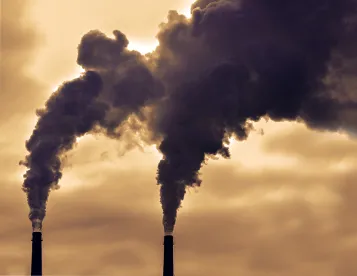On November 4, 2019, the U.S. Environmental Protection Agency (the “EPA”) proposed to amend the 2015 coal combustion residuals (“CCR”) rule. The proposal is part of a multi-step effort by EPA to address CCR, including a second proposal announced on the same day addressing effluent guidelines coal-fired power plants. The EPA has already drawn sharp criticism from environmental advocates and non-governmental organizations who argue that the EPA proposal will permit more pollution and slow corrective action. While the proposal does permit utilities to apply for extensions for continued use of CCR impoundments, those who dismiss the rule as a rollback ignore some key facts:
-
The majority of the CCR rule remains operational, including the ongoing requirement for groundwater monitoring and public disclosure of data.
-
More impoundments will now fall within scope of the obligation to stop use and either retrofit or close the impoundments.
-
Although the EPA proposes both a short-term and longer extension to the deadline, the amendments include specific criteria for what utilities will need to submit to obtain the extension and measures for public transparency for both the basis for extension and progress to reach closure.
In Utility Solid Waste Activities Group et al. v. EPA (Aug. 21, 2018), the D.C. Circuit vacated certain provisions of the 2015 CCR rule and remanded some provisions to the EPA for further consideration. The November 4, 2019 proposal establishes a new deadline of August 31, 2020 for facilities to stop accepting CCR into surface impoundment units and either retrofit them or initiate closure. The current deadline is October 31, 2020. Additionally, the EPA changes the classification for “clay-lined” or compacted soil-lined impoundments from “lined” to “unlined” and specifies that all unlined units must be retrofitted or closed, not just those with groundwater contamination above regulatory levels. The changes reflect the mandates from the D.C. Circuit. Critics of the EPA’s proposal contend the Agency failed to address the exemption for legacy ash sites located at closed power plants, which the D.C. Circuit also found was unlawful.
To address circumstances that the EPA recognizes may preclude compliance with the August 31, 2020 deadline, particularly for impoundments that would not have previously been included under the scope of the rule, the EPA proposes a series of amendments that create essentially two tracks for extension of the August 31, 2020 deadline. The first is a short-term alternative designed to be self-implementing which would grant facilities a three-month extension to the deadline to cease receipt of CCR waste. The second establishes a process and criteria to petition EPA for site-specific approval for longer extensions based on one of two demonstrations. To obtain more than the 30-day self-policing extension of the cease of receipt of waste deadline, the EPA will require four lines of evidence from owner/operators:
-
a demonstration of the lack of alternative capacity available on-site or off-site;
-
a demonstration that CCR and non-CCR waste streams must continue to be managed in the CCR surface impoundment due to the technical infeasibility of obtaining alternate capacity prior to November 30, 2020—this demonstration must include an analysis of the adverse impact to plant operations if the CCR surface impoundment in question were to no longer be available for use;
-
a detailed workplan on obtaining alternate capacity for CCR and/or non-CCR waste streams and a narrative discussion of the steps and process that remain necessary to complete development of alternate capacity for the waste stream(s); and
-
a narrative on how the owner or operator will continue to maintain compliance with all other aspects of the CCR rule.
The proposed amendments include specific data requirements for extension petitions, set out parameters for granting the extension, set deadlines to submit the applications, and require semi-annual progress reports to be made publicly available. Increased cost or inconvenience will not be sufficient bases to extend the deadline. Additionally, the EPA intends to publish decisions for public comment before issuing final orders to grant extensions.
The key deadlines in the proposal are summarized below:

Owners and operators of impoundments that contain CCR waste should promptly determine whether the proposed amendments will trigger any compliance concerns and begin the process now to prepare the necessary evidence to apply for any extensions. All stakeholders will have the opportunity to comment and to participate in a virtual public meeting on the proposal in early January. Regardless of the outcome of the final revisions to the cease of receipt of waste deadline and any permitted extensions, owners and operators of CCR impoundments have ongoing compliance obligations and potential for liability.
It is also important to remember that failure to comply with the CCR regulations is not the sole source of risk. Separate from the CCR rules, contamination from CCR disposal units can trigger Federal or State cleanup requirements. In addition, neighbors, public interest groups, and other stakeholders may respond to alleged contamination from CCR units with litigation under citizen suit or other statutory provisions or traditional common law claims such as nuisance or trespass. Thus, successfully managing CCR risk may require a more holistic strategy than one that focuses solely on regulatory compliance.





 />i
/>i
